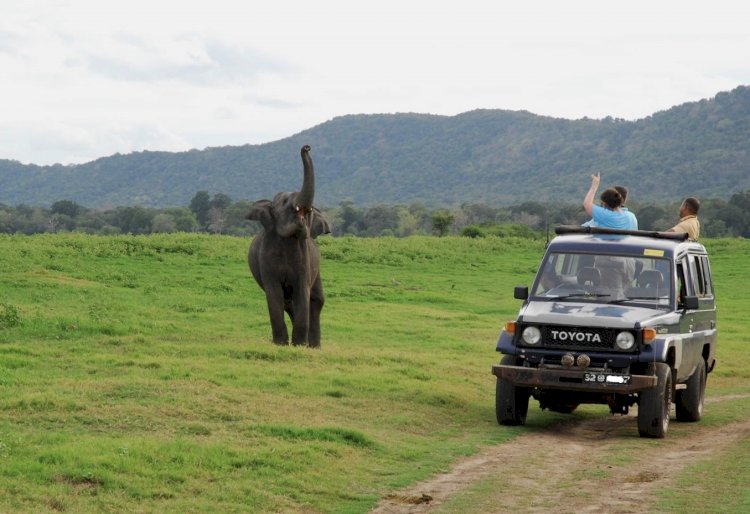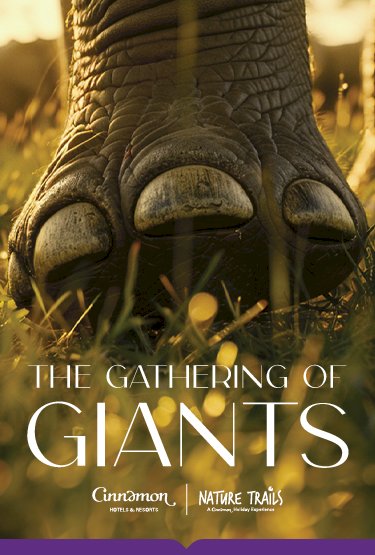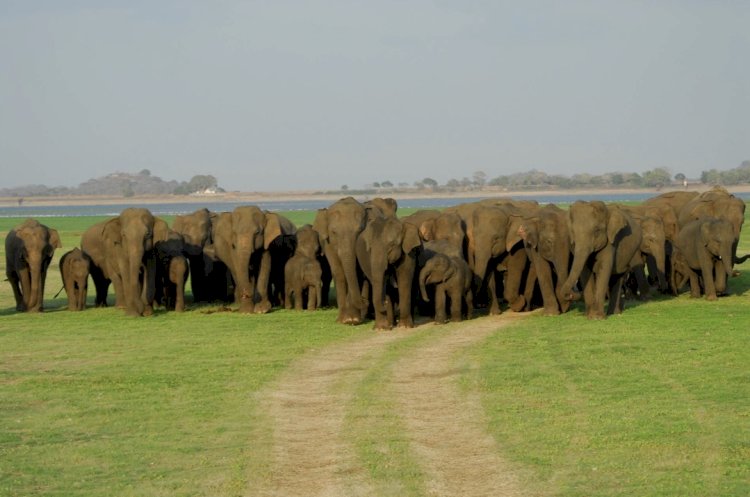Understanding Sri Lanka’s Gentle Giants

Sri Lanka, a country rich in history and natural splendour, is home to a diverse array of wildlife. Among the most captivating of its inhabitants are the Sri Lankan Elephants. These gentle giants roam freely across the island and are central to one of the world's most extraordinary wildlife spectacles: ‘The Great Elephant Gathering of Asia.’

The Great Elephant Gathering
‘The Great Elephant Gathering of Asia’ is a unique phenomenon occurring during Sri Lanka's dry season at the Kaudulla and Minneriya National Parks. Ancient man-made lakes, still in use today, recede to reveal lush grasslands, attracting hundreds of elephants from adjacent areas to the Minneriya and Kaudulla reservoirs. These majestic creatures converge to feast, mingle, frolic in the water, creating a perfect setting for nature enthusiasts and researchers to observe and study elephant behaviour. This gathering not only provides a breathtaking natural display but also fosters a harmonious coexistence between humans and wildlife, emphasizing conservation and regeneration efforts.
An Unparalleled Safari Experience
Visitors to the gathering can embark on a safari like no other, witnessing elephants interact within their herds and with others. According to Dr. Sumith Pilapitiya, Former Director General of Wildlife Conservation of Sri Lanka and Elephant Ethologist, the quality of a safari is elevated by observing these interactions. From feeding habits to the nurturing of calves, the presence of knowledgeable naturalists enhances the experience, offering insights into the unique behaviours, signals, and gestures of these magnificent animals.
Distinguishing Features and Behaviours
Male and female elephants exhibit distinct physical features. Females, appearing curvier, stop growing around the age of 25, whereas males, broader and more square in shape, continue to grow even beyond their sixties. Tusks, exclusive to males, are a prominent feature, though only 5-6% of Sri Lanka’s male elephant population bears them. These highly intelligent mammals require more than 150kg (330lbs) of food daily, and herds typically occupy territories spanning 50-100 square kilometres. Males, leaving their herds at 12-15 years, claim larger territories, sometimes extending up to 350 square kilometres during musth.

Human-Elephant Conflict and Conservation
As human populations expand, encroaching on elephant habitats, conflicts have increased, causing casualties on both sides annually. Raising awareness and educating people on elephant behaviour is crucial to protecting the gathering and ensuring the survival of this majestic species on Sri Lanka’s emerald isle for generations to come.
How Can You Witness This?
An elephant watching safari is available for those who want to witness this spectacle during the dry season. Cinnamon Lodge Habarana and Habarana Village by Cinnamon provide opportunities for their guests to experience this through their in-house travel counter, Cinnamon Nature Trails. These safaris offer a chance to observe the elephants up close, guided by experts who enrich the experience with their knowledge of elephant behaviour and the local ecosystem.
In conclusion, experiencing Sri Lanka's gentle giants during ‘The Great Elephant Gathering of Asia’ offers an unparalleled opportunity to connect with nature. It highlights the importance of conservation and the need for sustainable coexistence between humans and wildlife. By fostering understanding and respect for these magnificent creatures, we can contribute to their preservation and the natural heritage of Sri Lanka.
Images captured by Chitral Jayatilake - Vice President, Cinnamon Nature Trails













































